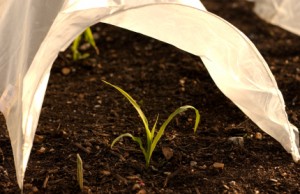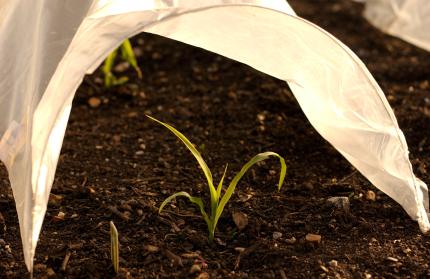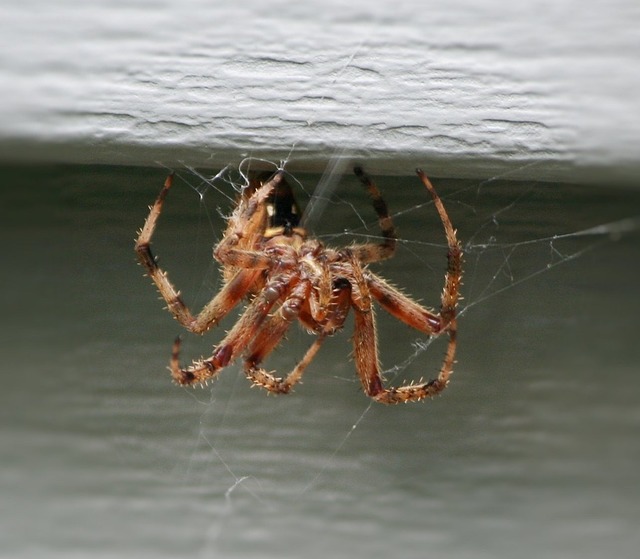 The temperatures are dropping, and you might feel a little melancholy thinking about your garden freezing under all that snow and not having any fresh produce until summertime. Put away the tissues and consider these methods of extending the growing season. Some have been tried and true for centuries, while others are fairly new and creative ideas. Effectiveness of each method will vary a bit with your climate as to how long they work well for your plants, but you may be surprised at how much longer you can be bringing food into your kitchen from your own garden.
The temperatures are dropping, and you might feel a little melancholy thinking about your garden freezing under all that snow and not having any fresh produce until summertime. Put away the tissues and consider these methods of extending the growing season. Some have been tried and true for centuries, while others are fairly new and creative ideas. Effectiveness of each method will vary a bit with your climate as to how long they work well for your plants, but you may be surprised at how much longer you can be bringing food into your kitchen from your own garden.
The main contributor to halting the growing season is the drop in temperature in a given area. Know your frost dates, but also keep an eye on the weather as that day approaches so that you can be ready and protect your plants accordingly.
The Cloche
A cloche is basically a simple way of covering a single plant in order to protect it in adverse conditions, i.e. freezing weather. The use of the cloche has been around for centuries, having origins in France in the form of elaborate, visually appealing bell-shaped jars that were set over tender plants in the evenings and removed when the temperatures rose.
It is important to note that in many cases, the cloche must be monitored. This is especially true if the area that the plant is located is in direct sun. The air in the cloche has the potential to warm quickly and cook your plants. Also, if the cloche remains on the plant for a long period of time, the plant will have a tendency toward fungal growth or mildew due to the lack of air circulation within the cloche.
Considerations aside, the cloche idea is a great one when you need a quick fix for an unexpected freeze.
A simple cloche system to try would be with larger jugs or bottles (such as gallon milk jugs or two-liter soda bottles) with the bottoms cut out. A more attractive option would be to repurpose a cake cover or to purchase a glass cloche from a gardening center.
Row Covers
Row covers are an extension of the idea of the cloche. Again, the idea is to cover and protect the plants from frost. The method is as simple as covering your plants when you know adverse conditions are coming.
The simplest method is to use an old sheet, blanket, tarp, or even newspaper and gently lay this over the plants for the times of freezing (you may need to support with stakes so as not to crush your plants, and if you expect wind, it is a good idea to weight the covering along the edges). This method can be used for a few weeks to a month in colder climates, before the weather turns too cold for even the row covers protect your plants.
The more complex, more costly, but more convenient way of covering your rows is to purchase the plastic or polyester row covers or long half-hoop tunnel setups made for this application. These are often made to allow light and air in for the plants, do not have to be removed and replaced regularly, and protect your crops with more security than a blanket can. In addition to extending the fall season, these more versatile row covers also allow you to get a jump on the season in early spring.
The Cold Frame
A cold frame is the next level of protection for your garden plants. As the name implies, it consists of a frame around your plants with a top that allows light in for the plants. A cold frame tends to be sturdier than row covers, and the plants tend to be more easily accessible via a hinged or sliding door.
A cold frame can be as simple or as complex as you choose to make it. There are many plans that can be found online to build one of these yourself, or if you feel fairly confident in your creative skills, you may be able to design one from found items on your own after taking a look at what others have created. Of course, if you are not averse to spending the money and can find what you are looking for, you can purchase a cold frame as well.
Keep in mind that on particularly warm days, you may need to prop your door or windows open on your cold frame so that your plants do not get too warm.
New Survival Seed Bank™ Lets You Plant A Full Acre Crisis Garden!
Greenhouses
A greenhouse is usually one of the first things that come to mind when thinking about extending the growing season, though it is most often thought of in spring. If you choose to build one, consider attaching it to the south side of your home so that it can receive as much sunlight as possible as well as some of the ambient heat from your house. Having it this close to your house will also make it easy to add electricity and heat directly, if you choose to do so. Heating may not be necessary, depending on how many windows you have, the efficiency of your greenhouse walls in holding in heat, your climate, and other factors. If you live in an area with a particularly short growing season, you might consider planting your most tender plants in the greenhouse where the season will be considerably longer.
Take Advantage Of Radiation
If the sun shines at all in your area in the cooler months, you can take advantage of that energy and put it to use in warming your plants.
Here are a few ideas to think about:
1. Lay black or other dark colored landscaping cloth on the ground at the base of your plants to help soak up the rays and the warmth.
2. Paint your cold frame a dark color to help soak up the sun. Don’t forget to leave some windows so that light can get in too!
3. Consider planting in old tires, especially if you live in a cooler climate. The tires will soak up the rays during the day and release that heat through the night hours.
4. Fill plastic bottles with water and set them around your plants to protect them. This is where the “Wall o’ Water” idea for protecting tomatoes came from, and that particular product, used with our tomato plants planted in repurposed tires, enabled us to gather more than eighty tomatoes in our high mountain garden one year.
5. Place the filled plastic bottles in the back wall of your cold frame where they will get the most sunlight. Bonus points if the bottles are painted black so that they collect more heat.
Bring Them Inside
If you have a sunny window, you might want to bring some of your plants inside for the winter. I would recommend this if you have a cherished herb or a vegetable plant already in a pot, but not necessarily for many other garden plants. You really need to have a good amount of light for good production. If you have a good spot in your home, you might consider giving this a try!
Whatever your climate, there are ways to extend your growing season so that you can get as much from your garden as possible. Give these ideas some consideration and decide what would work for you. By all means, these are not the only ways to keep a garden producing. I am sure other gardeners have come up with creative solutions of their own.
Have you had success doing something different? Please share!
©2012 Off the Grid News











